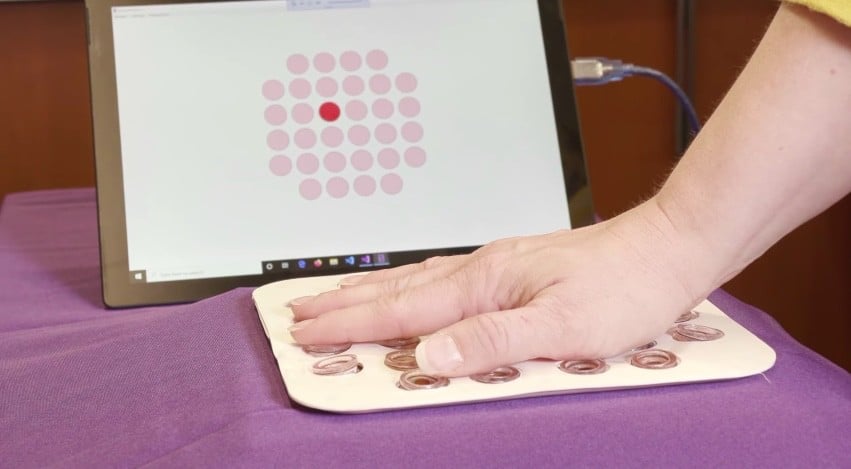Though virtual reality permits users to hear and see computer generated environments there is always a limitation when it comes to people feeling those worlds. This can be changed with the introduction of Epidermal VR System.However, Epidermal VR to give touch to virtual reality in the coming days.
City University of Hong Kong along with Northwestern University Scientists came up with this experimental technology. It includes flexible, soft and thin elastomer patch which adheres to user’s skin temporarily.
Furthermore, the patch is embedded with wirelessly controlled and wirelessly powered disc shaped electronic actuators. Prototype designed with size of 5.9 inch at now includes 32 devices. However, more of them can be packed in a given area if at all actuators get small.
As per the City University Assistant Professor actuators are both breathable and reusable and functional with full range of twisting and bending when present on the user. The actuators produce radio frequency power via the antenna present within a certain distance.
The whole concept behind this is whenever an epidermal patch is attached by a VR Game some of the actuators begin vibrating against the person who wears it. Thus, stimulating the person’s touch in that particular area.
In fact, actuators resonate around 200 cycles per second and this is the frequency at which human skin displays maximum sensitivity.
It even allows one individual to control another individual’s patch in real time using a smartphone, tablet or touch screen interface. This works as such, suppose if the sender traces an ‘X’ on their screen recipient could feel it on their skin below the patch.
On improvising further, this functionality even allows video chat participants to virtually touch one another using their devices.
If given a chance we can expand the capabilities and boundaries of virtual reality. In fact, skin is relatively unexplored sensory interface when compared to Eyes, Ears and can enhance the experience.





